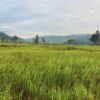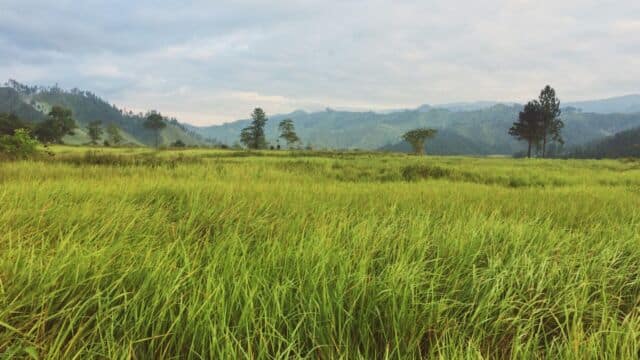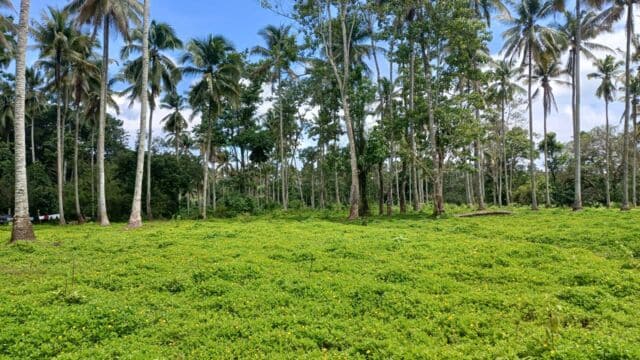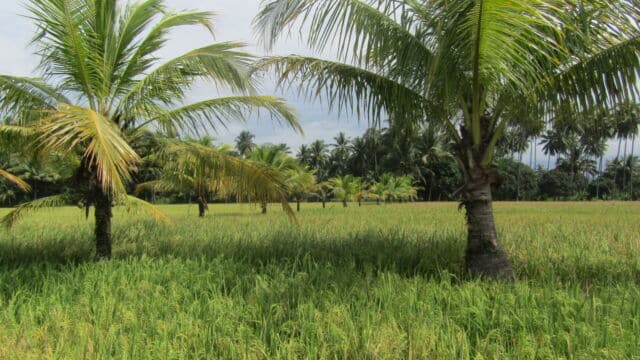The Plantito of Dadiangas
Photo: Eric Gerard H. Nebran.
A backyard in General Santos City | 3,062 words
In General Santos City, nestled on the southern coast of Mindanao, I wake up drenched in my own sweat. Morning sunlight enters the open windows and streams through the mosquito net covering my bed. Cursing the sweltering heat, 33°C and rising, that seems intent on melting everything, I untangle myself from the sheets and crawl out of the moskit. Outside, the shirts we hang on our backyard clothesline dry fast, but everyone seems perpetually damp with perspiration.
Over breakfast I start an argument with my mother, pointing out that our house could have been a lot cooler if she hadn’t asked our enterprising neighbor to cut down two coconut trees and severely prune a gnarly malunggay tree plus the branches of kamias which had formed a canopy over our outdoor kitchen.
“Masiot na,” my mother says, telling me that the trees, vines, and tall shrubs around the house had become dense and she wanted to dispel the gloom. I point out that when the house is bathed in daytime sunlight, we are baked like bibingka—those rice cakes with tuba or coconut wine sold by roadside vendors, that come steaming hot from pugon or makeshift ovens.
She says to me, “Go and water your plants.”
*
I do what she asks. Although watering plants does little to lower my temperature, I know it works wonders for my mood. I feel a lot calmer surrounded by my plants. In my garden, plants grow lushly from pots of every size, their leaves stretching and spilling out of containers, eager to catch rays of sunshine. There are plants whose broad, glossy leaves fan out from stems. Others cluster like the bouquets tossed by blushing brides. Some plants unfurl delicate fronds, others cascade like emerald waterfalls. I assembled wooden shelves and arranged the pots in tiers, grouping plants by size, shape, and color—my amateur attempt at botanical classification. I grouped the varieties with deep hues, those with graceful leaf blades, and the cascading kinds, and allocated a section for plants that only occasionally bloom: a bright red bulb here, bunches of white petals there, infrequent bursts of other colors against the gradients of green.
Today, to my horror, I discover leaf scorch in my garden. The sun has burned the exposed leaves of the plants I’ve so carefully arranged.
This backyard greenery is the product of a “gardening boom” several years ago. During the pandemic, people began turning to backyard plant cultivation either to cope, pass time, or hop onto a new recreational “craze.” Amid danger and death, people seem to find hope in nurturing life.
I was a late bloomer to the gardening phenomenon, jumping on the bandwagon after some friends invited me to join them in their hunt for new varieties of lilies to include in their meticulously-curated gardens. Some of them didn’t need backyards; plants can be placed in any lit space. I used to scoff at Rey, a plantito friend—“plantito” is a punning neologism that combines the words “plants” and “tito”, or “uncle”—who would purchase expensive plants from sellers who had made a business out of the sudden demand. It became such a fad that plants began to be stolen. People took to social media to describe how thieves had snuck into their backyards and stolen flora they had painstakingly grown for years. Some of these acts were captured on CCTV: the thieves would drive by, usually on a motorcycle or tricycle, and with lightning-fast reflexes rip out plants like they were harvesting root crops. Garden owners would later find broken stems, scattered leaves, empty pots, and holes in the ground where their precious leaf-babies used to be. The poaching of rare plants from the forest also became so rampant that the media even covered government officials’ intensifying of forest patrols. Warnings were issued: those who collect plants classified as critically endangered could face fines or even spend time in prison.
Why do we feel such a strong urge to bring the forest into our homes? “The forest in sachet form!” Rey once declared when I visited him and found his living room teeming with snake plants and other varieties of indoor plants.
“Naunsa?! You even have tiny pots for these teeny-weeny popcorn-like plants!” I chuckled at the planters no bigger than my fist. Some of the plants looked like the specks of green that grow out of crevices or moss that gets trampled on pathways. But here, they were placed in containers that asserted their presence.
Rey’s motivations for gardening amused me. “I bought them because they’re cute. Estetik!” he said. But was his inspiration so different from mine? I wondered if plants have taken notes from animals and evolved to become endearing and aesthetically pleasing to humans, charming us and thus bettering their chances of survival—and if this was influencing me as much as Rey. Or was it rather that, recognizing their majesty in nature, I was trying to replicate and capture a piece of that wilderness, bottling its beauty to bring life into my own otherwise unremarkable habitat?
A week before, I had accompanied Rey on a hunt for rare plants with colorful streaks. I made a fuss at his insistence on shelling out a small fortune for a potted Aglaonema. Like Philodendrons and Colocasias, I know some varieties of these plants are just growing wildly beside shallow rivers and even canals outside the city center. But Rey countered by saying that these plants were special—by virtue of their variegation, or that they’d been pruned and polished to near perfection, so unlike their “wild” counterparts that freely grow anywhere, dense, tangled, and “masiot.” Rey had my mother’s aversion to impenetrability and gloominess.
*
It’s far from the first time I have encountered the “taming” of vegetation: in this part of the world, plants are often cleared and trees cut down with the justification that they have become “unmanageable”, their natural ways of growing deemed “unsightly”.
I pick up a hose and turn the faucet, directing a stream of water toward my vines, varieties of pothos creeping along the gray walls that mark our perimeter. Our house also used to be surrounded by madre de cacao trees that my father planted to serve as a fence. Together with bamboo poles tied using rattan, the trees marked the boundaries of our house, and also served as a playground for us neighborhood kids. The trees were our fort. We climbed their trunks, swung like monkeys from branch to branch, and made make-believe money out of leaves. Also known as kakawate, these trees have purple bunches of fluorescence that I still believe to be the sweetest-smelling fragrance on Earth. One of my fondest childhood memories is waking up to the scent of their blooms. My Ilocano relatives make fried fritters from these flowers.
But the trees were cut down and replaced with imposing walls of cement. Ours had been one of the few houses left in the subdivision that did not have a “proper fence,” so one afternoon, I returned home from school to find the trees, which in Kilmer’s poem, supposedly have their leafy arms lifted to pray, now lying on the ground, their roots pointing skyward in twisted agony.
The disappearance of my childhood playground was a rude introduction to development. Soon after, I began noticing the gradual disappearance of greenery beyond my home.
These days, it seems that the people in my city are waging a full war against trees. Gigantic acacia trees that used to line major roads are felled so the roads can be widened further. Balete or Ficus trees with huge domes of leaves are “trimmed” and reduced to skeletal collections of twigs. One of the reasons given for the decimation concerns public safety: the branches of tall trees tangle with electric wires, rotting old branches fall on passing pedestrians, and roots crack carefully-paved sidewalks.
The main thoroughfare in General Santos City is named Pioneer Avenue, but aren’t “avenues” so named because they are lined by trees? Whenever I walk there, I look up and see wires shooting out from utility poles, more tangled than the tendrils of a Balete. People cut down an entire grove of trees that can blot out the sun and then spend thousands on Freon to cool their surroundings.
After watering my garden, I get my phone and take pictures of the plants. I share these in a group chat where my friends and I stay in touch. I’ve seen a lot of people sharing their gardens on social media, and met others there who have the same hobby.
In our city, there was a place the plant-people were all drawn to. Months after the lockdown, when I had been converted into a plantito, I met other plant lovers who frequented Gensan City Gardens, a collection of stalls maintained by members of a cooperative of gardeners, landscapers and plant-enthusiasts. The foliage that embraced their little stalls was an oasis in the city’s sweltering heat. The sellers competed in making their allotted spaces attractive: beautiful Bromeliads, Caladiums, Calatheas, lilies, succulents, and many other lush plants vied for our attention from each stall. With the shade offered by trees and vines, I felt as though I stood in the middle of a forest. Time and troubles were forgotten. But all that is gone now. When the local government started a “plaza renovation,” the vendors along with their plants were displaced. Trees that got in the way of the infrastructure were cut down. I wasn’t even able to make a last-minute purchase.
There used to be a lot more lush green spaces in this city. While I maintain a backyard garden of plants that I constantly shower with attention, outside my home, greenery is rapidly disappearing.
General Santos City was founded as a settlement for migrants who brought with them the state’s hope to “tame” the frontier. Early surveys describe grasslands stretching from Mount Matutum to Sarangani Bay. Some of the early settler families owned ranches in contrast to Indigenous peoples like the Blaan who practiced communal land sharing because they were shifting cultivators. In 1939, a “pioneering” group of settlers landed on the shores of the southern part of Koronadal Valley under orders of President Quezon’s Commonwealth government for the “industrious cultivation” of the area. Mindanao was advertised as a pioneering frontier, “underdeveloped and unexploited,” and people from other parts of the country were encouraged to take part in the expansion of its plantation economy. Farmers and fisherfolks from outside were said to have been shown gigantic stalks of corn as proof of Mindanao’s agricultural potential.
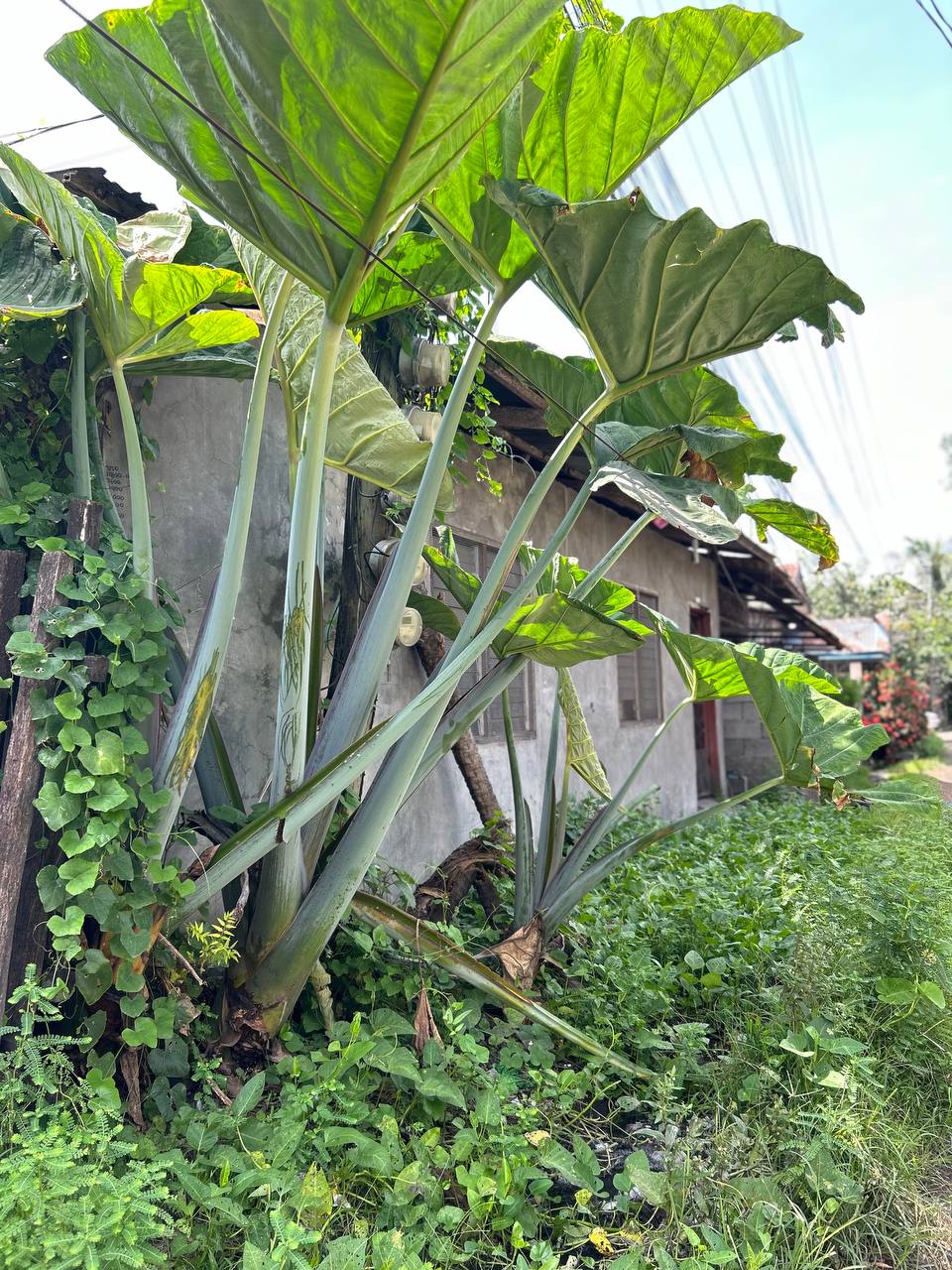

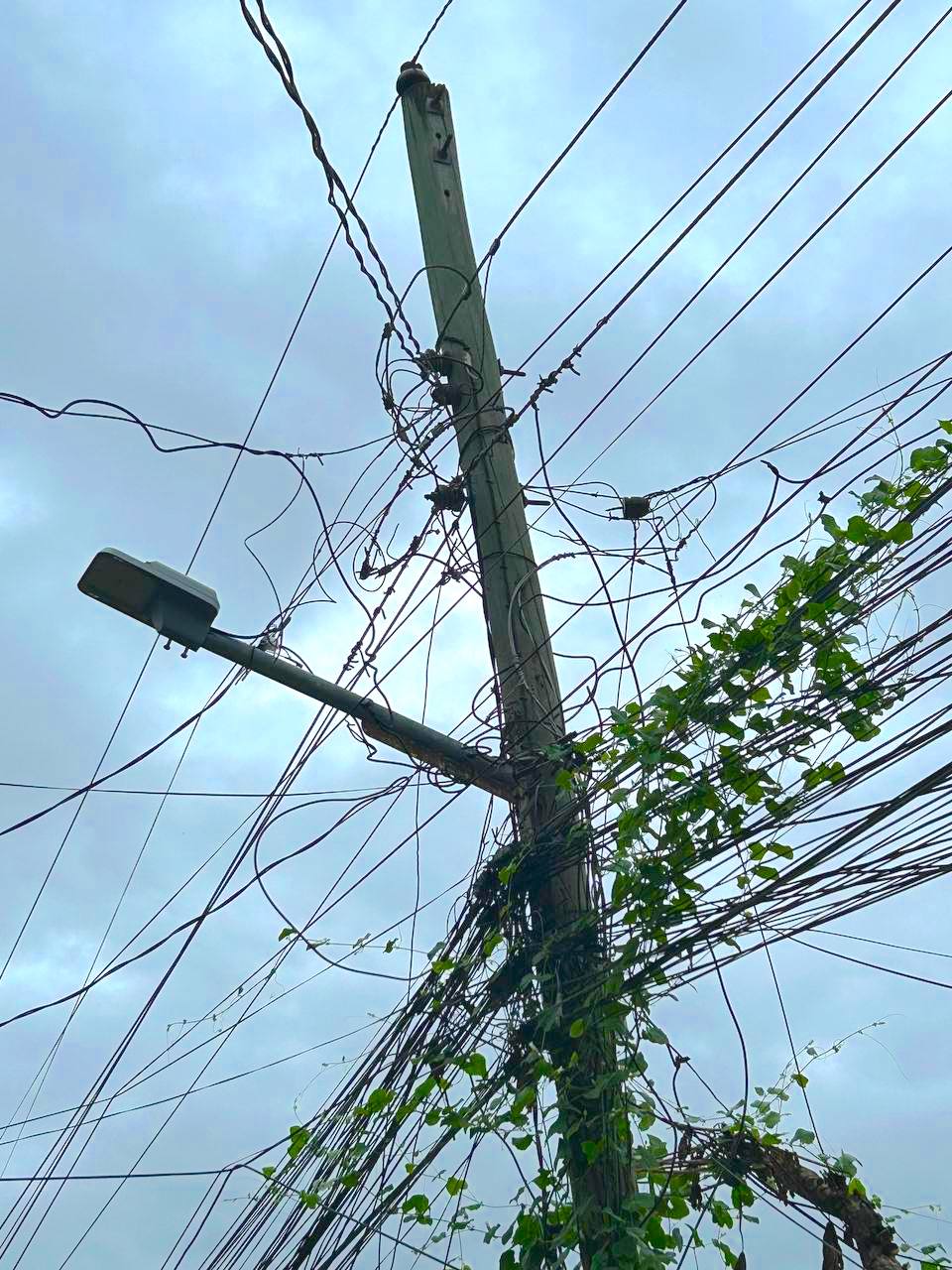
Photos: Eric Gerard H. Nebran.
Before being named after General Paulino Santos, the penal colony officer who led the settlers, the city was called “Dadiangas.” The name came from what the Blaan call a thorny plant that can grow as tall as a tree and thrives in the valley’s volcanic soil.
Now, 85 years later, the only thick shrubs one can find in the city center are the hedges lining parking spaces of malls. As for the Dadiangas plant, there is one left in the middle of the city, growing behind statues of Paulino Santos and Jose Rizal.
Downtown is now pruned to near perfection. Where there were once ranches and open fields, suburbs now dot the landscape. Like my potted plants, houses are built in neat rows and bordered by sterile walls and manicured lanes. Those without land titles are left to fend for themselves, marked as “informal”—human lives whose legitimacy are determined by official labels and tended by stronger forces. Like wayward stems and shoots, unmanageable parts of plants that don’t fit into my or any other system of classification, they are swept to the side or discarded altogether.
*
In our backyard, banana trees still survive and bloom. My mother insists that it is important to have them, especially the saba variety, a fast-growing source of food. If we are patient, we can have bunches of the fruit that can be cooked in many ways. There’s the heart or clump of blossom of the banana trees, too, that’s eaten like a vegetable.
I have recently learned that our subdivision used to be a banana plantation. Some of the older tricycle drivers shared with me their memories: the roads they now ply used to be creeks that collected runoff from watering the banana trees, and their mornings used to begin with the roar of planes spraying pesticide over the area, with some of the workers who handled those chemicals falling ill. I was dismissive of those stories until I realized how difficult it is to grow anything directly in this soil. I have to source good, nutrient-rich soil elsewhere for my potted plants.
“Your lolo had a green thumb. He would have been proud of this garden.” My mother’s voice breaks through my thoughts. I turn and see her placing the shells of the eggs she cooked for breakfast among the orchids. She is talking about my grandfather, Lolo Pidong, a farmer.
I turn back to my Monsteras, spraying more water on the leaves. When Lolo Pidong was still alive, he taught me about the crops he was growing and shared his planting techniques. Though I never quite inherited his gardening talent, his fantastic stories took root in my imagination. In one of his tales, a man retrieving his carabao from the fields fell asleep beneath a Balete tree. He dreamed of being transported to a glittering world with beings unlike any he’d seen. When he awoke, three days had passed, and his carabao had returned home on its own.
Since hearing the story, I’ve imagined Balete trees as portals to a hidden world far beyond my ordinary reality. Lolo provided me with a window to view the world outside my suburban existence. When he died in 2015, I coped by imagining that he had just gone out and fallen asleep under some Balete tree.
“I guess lolo would have wanted to trim the trees, too. Para magsalingsing,” I look and see sprouts appearing on the severed branches of the malunggay tree, and the kamias are continuing to grow their sour fruits. My mother keeps silent, tending her orchids. My grandfather always kept a bolo for cutting branches and vines. He believed that pruning encourages plants to grow even denser and lusher, as if they were retaliating by growing vigorously. From the violence of being hacked, the plants put all their energy into regenerating with even more force.
It seems that my mother and I have reached a truce. Maybe I was just worried because of the superstition that cutting down a tree inhabited by spirits brings bad luck. Despite scientific scrutiny, trees have a history of magic in local lore. In dystopian fiction, meanwhile, plants are often entities that reclaim spaces where human activity has ceased. One recurring idea from the genre genuinely scares me: plants releasing spores that make zombies out of living creatures. But if there’s truth to all the recurring folk stories about trees, and they aren’t as helpless as most of us think they are, then a part of me is rooting for them.
I invest a lot in growing plants in pots, yet many of the same plants flourish effortlessly in the wild. I see there is an artificiality to this hobby. Imagine bringing a primordial forest, with its towering trees and creatures competing for survival, into the confines of my home. Isn’t it a pathetic attempt to tame the wilderness and its spirit into a pocket-sized existence? I have bound a force of nature, that reveals the passage of time, and the cycle of life and death, into pots and planters. What do I really achieve when I transform a dense undergrowth into an inventory of shrubs, when I act as a messianic figure wielding shovels and shears to shape a forest according to my own vision?
There are also times when I see how this obsession with gardening is largely insular. Despite my romanticized ideas of environmental conservation out in the wider world, I have mostly corralled myself in this space, within my walled garden. And this can also be said of other plantitos and plantitas (and plantitxs?) like me who find comfort and fulfillment in our gardening endeavors but are sadly removed, by circumstance or choice, from the harsh realities and immediate concerns beyond our gardens’ borders. I think again about the forest, and how being a forest ranger in the Philippines can be a dangerous job. This work of guarding the forest entails guarding one’s own life as well. Only a handful of people want to protect the forest while putting themselves at risk.
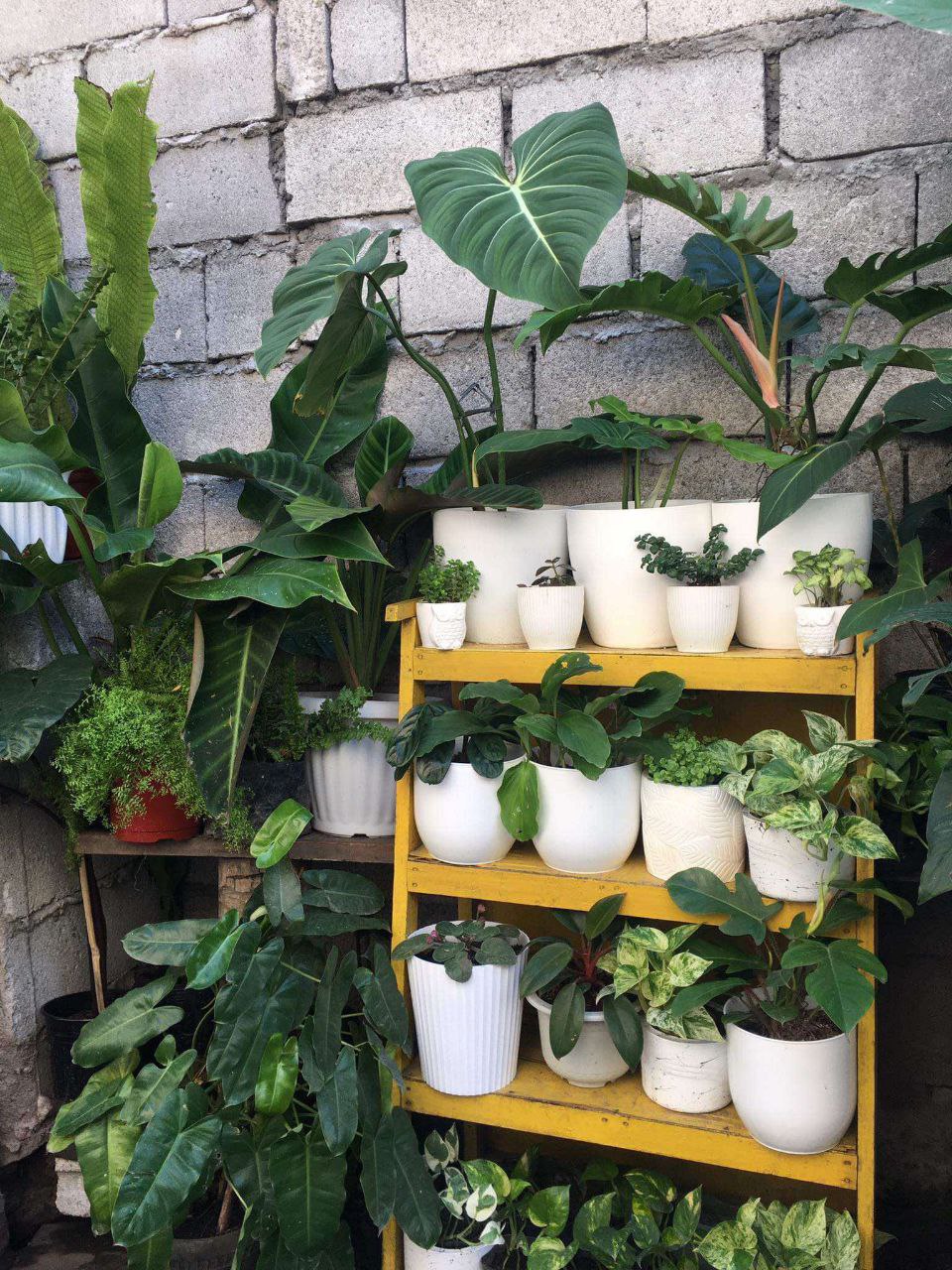
Photo: Eric Gerard H. Nebran.
Then there are times when my thoughts turn apocalyptic. General Santos City is not the only place with temperatures spiking. Elsewhere, forests are burning, sea levels are rising, coastal cities may be inundated in twenty years, extinctions of various flora and fauna are at unprecedented levels.
…But at least my newly-fertilized Monsteras and Calatheas are thriving.
If we were to really lose hope, though, we might believe that our actions within our own bubbles aren’t worth bothering about at all. Gardening may just be our way of rejecting the beckoning void of ecological despair. One account regarding the creation of the world mentions the expulsion of humans from a garden—an idyllic Eden we could never return to. Do we now work the ground, using the dirt from which we were said to be made, in order to recapture the sense of security from that nurturing womb? At a time when large corporations continue to profit from the exploitation of nature, promoting the old ways of coexistence with the forest, even in these modest forms, might not be a futile endeavor after all. Perhaps we are not bringing the forest into our homes; instead, it can be conceived that the forest has found another way to accommodate us in its planetary embrace.
By next month, I say to myself as my mother and I go back into our house, I might just try my hand at cultivating bonsai.
© Eric Gerard H. Nebran
Commissioning editor: John Bengan



